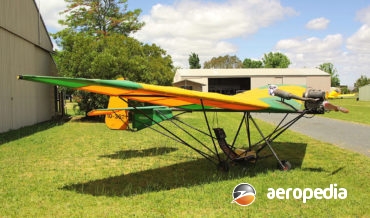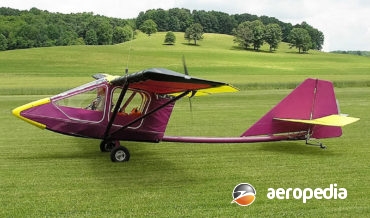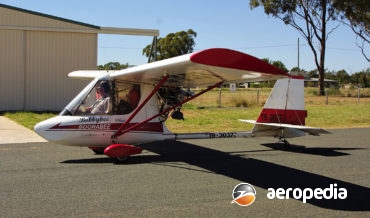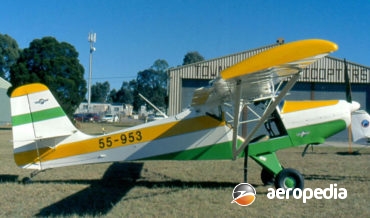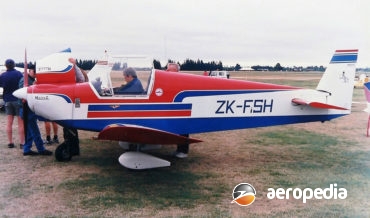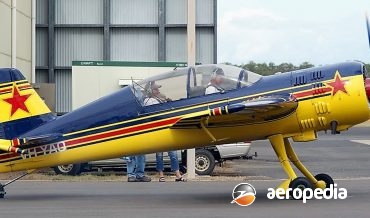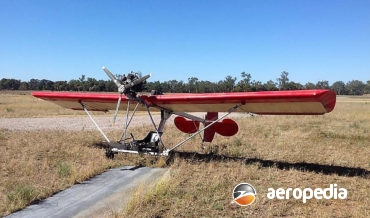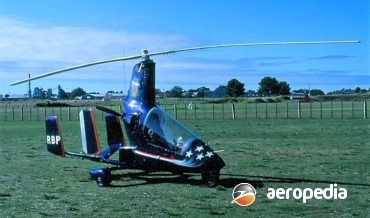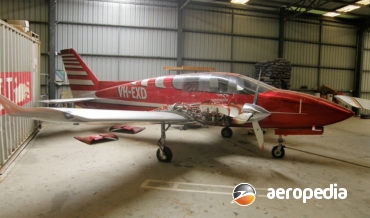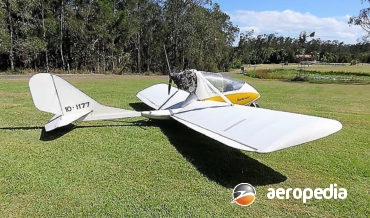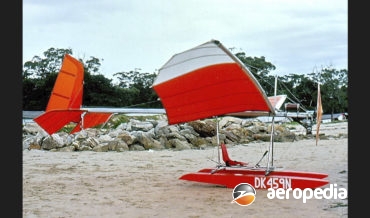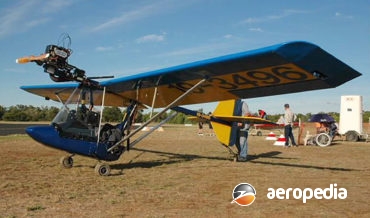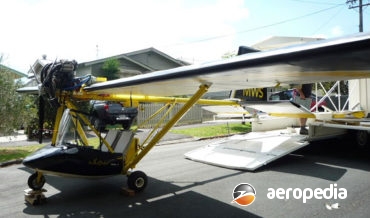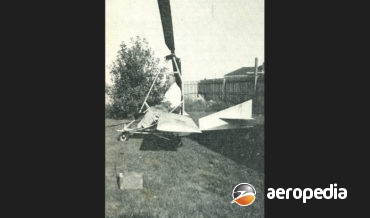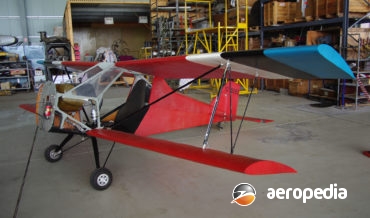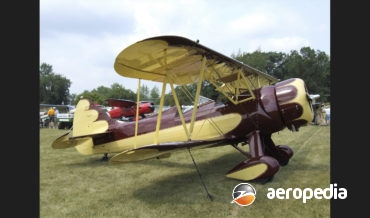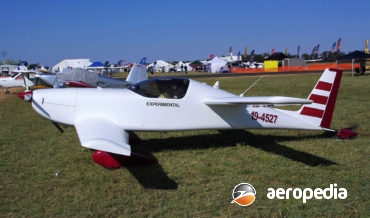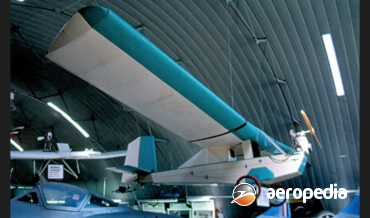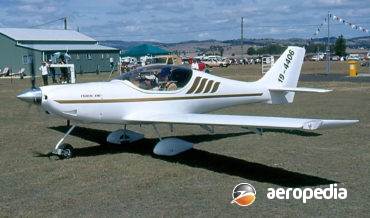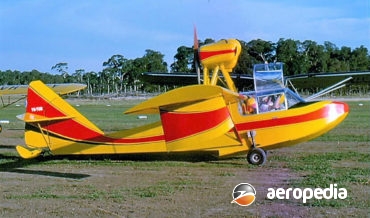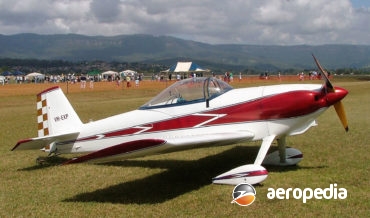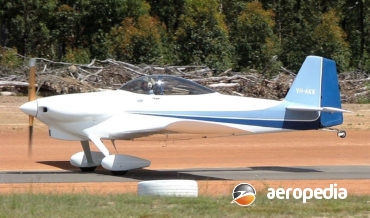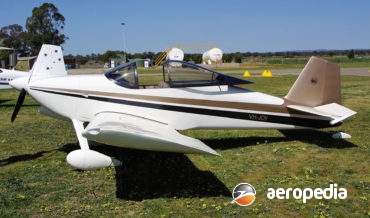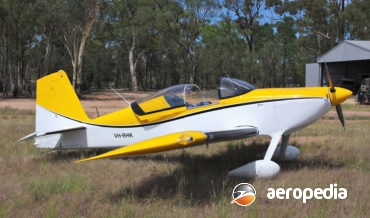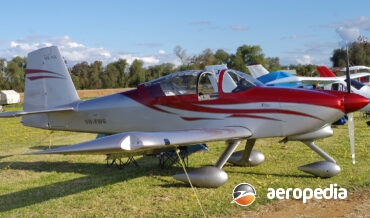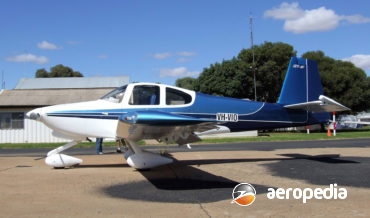All Contents
Contents
The Weedhopper was a high-wing ultralight aircraft fitted with an engine in the tractor configuration, a tricycle undercarriage, and with two-axis control. It was initially developed by John Chota in the late 1970s during the boom in ultralight aircraft and was introduced to the market in 1977.
David C. Eyre
- May 17, 2019
The Hawk series of light aircraft was designed by CGS Aviation Inc of Broadview Heights, Ohio, formerly Chuck’s Glider Supplies, the first machine being made available in 1980, as a single-seat light sporting aircraft which could be made available in kit form.
David C. Eyre
- May 17, 2019
In 2006 Cessna announced it intended to produce a series of new designs using modern technology and, amongst these, was a new training aircraft, seating two, to meet new light sport aircraft regulations introduced into the United States.
David C. Eyre
- May 17, 2019
The Boorabee is an ultralight which could be built in either single-seat or two-seat forms.
David C. Eyre
- May 17, 2019
In the mid 1980s Mr Dan Denney formed Denney Aerocraft Co in Boise, Idaho to build a two-seat ultra-light aircraft known as the Kitfox, and in the first year 21 kits were delivered.
David C. Eyre
- May 17, 2019
This was one of a number of light training aircraft and was described as a fully-aerobatic two-seat conventional tractor biplane built by the Canterbury (NZ) Aviation Company at Sockburn near Christchurch and in many ways was similar in appearance to the Sopwith Tabloid. It made its first flight
David C. Eyre
- May 17, 2019
Initially designed in the United States by Carlson Aircraft Inc of East Palestine, Ohio, the Sparrow was modified to meet Rule 101.55 by Lake Macquarie Aviation, the type initially to be built for the Australian market at Warners Bay, NSW, and later plans were announced to construct both it and
David C. Eyre
- May 17, 2019
The CH-100 series of light single-engine aircraft was designed by German born, Canadian domiciled, designer Christopher Heintz and was designed for amateur construction, being basically a smaller variant of the CH-200 two-seater.
David C. Eyre
- May 8, 2019
The Yak 54 series of fully aerobatic light aircraft was announced in 1992, the prototype flying for the first time on 23 December 1993.
David C. Eyre
- May 8, 2019
The Jackaroo was one of many designs produced by the late Colin Winton and produced by Winton Aircraft in Queensland and is a single-seat high-wing open-cockpit aircraft, being first made available to pilots in about 1980.
David C. Eyre
- May 8, 2019
The Jillaroo was one of a series of ultra-light aircraft designed by the late Colin Winton, others including the Brumby, Jackaroo, Sportsman and Grasshopper and they had a variety of engines including examples from the Rotax series, Hirth, Zenoah and Fuji Robin.
David C. Eyre
- May 8, 2019
The Windryder is a single-seat autogyro produced by Windryder Engineering Inc of Broomfield, Colorado and the first of two prototypes, known as the Hurricane, flew for the first time in August 1985.
David C. Eyre
- May 8, 2019
The Derringer was designed by George Wing and built by his company, Wing Aircraft and Hi Shear in the early 1960s at Torrance, California as a two-seat, twin-engine sporting and training monoplane with a retractable undercarriage.
David C. Eyre
- May 8, 2019
The Sportsman was designed and developed by Colin Winton of Winton Aircraft of Coomera, QLD as a cheap, good handling light single-seat sporting aircraft powered by one of the popular at the time Volkswagen engine conversions.
David C. Eyre
- May 8, 2019
In 1987 Australian light aircraft Pilot, designer and builder, Scott Winton, announced he would built an all-composite light aircraft which was essentially a flying wing with a span of 6.7 m (22 ft) and a weight of 99.7 kg (220 lb), a wing area of 10 m² (107.6 sq ft)
David C. Eyre
- May 8, 2019
In early 2017 Morgan Aeroworks of Taree, NSW stopped production of its range of aircraft, comprising the Sierra and Cougar light sport aircraft, the owner of the Company, Gary Morgan, moving back to New Zealand.
David C. Eyre
- May 8, 2019
Ronald Wheeler was one of the people who foresaw the coming boom in ultralight aircraft in the 1970s and was a pioneer in this area.
David C. Eyre
- May 8, 2019
Designed as a simple to build and operate ultra-light aircraft, the Magpie was designed by Mr W “Bill” Whitney and was built and flown by Messrs Clyde Howard and Arnold Trapp.
David C. Eyre
- May 8, 2019
The Whitney scamp is a light sporting biplane with open cockpits designed by Mr W ‘Bill” Whitney in Queensland for amateur construction by Mr. Hargrave.
David C. Eyre
- May 8, 2019
The Fatboy is one of a series of ultra-light aircraft designed in the United Kingdom by Michael Whittaker, this being the first two seat side-by-side design produced by his company, with more than 200 sets of plans being sold by 2010.
David C. Eyre
- May 8, 2019
In the early 1960s Mr Leonard Williams designed and constructed a gyrocopter known by his friends as the Lennycopter.
David C. Eyre
- May 8, 2019
Mr Geoffrey Williams, before his death in May 2002, designed five ultra-light (microlight aircraft in New Zealand) of his own design and built four. He was the son of a former World War II Avro Lancaster pilot and lived in the Dunedin area. His grandfather was a carpenter and Geoff
David C. Eyre
- May 8, 2019
The WAACO Staggerbipe was first produced in the early 1980s by the West Australian Aircraft Company of Box Hill, VIC as a single-seat light sporting biplane and was made available in kit form for the amateur constructor.
David C. Eyre
- May 8, 2019
The 2-T-1 light sports trainer biplane was introduced to the aviation market in 1929 by the Great Lakes Aircraft Corp of Cleveland Ohio, the prototype flying during that year.
David C. Eyre
- May 8, 2019
The Waco 10 was launched in 1927 and certificated (ATC-13) in October that year. It was much improved on the Model 9, and was similar in layout and dimensions.
David C. Eyre
- May 8, 2019
In November 1935 the Waco YPF-6 was certificated (ATC-586) in the United States.
David C. Eyre
- May 8, 2019
The Wag Aero Cuby is a redesign of the well known Piper Cub by the Wag-Aero group of Lyons, Wisconsin, using modern construction methods and materials, being aimed at the home-built market.
David C. Eyre
- May 8, 2019
The Sportsman is a light sporting aircraft produced in kit form by the Wag Aero Group at Lyons in Wisconsin.
David C. Eyre
- May 8, 2019
The Fascination D4 is a two-seat side-by-side light kit-built aircraft produced by WD Flugzeugbau of Heubach, Germany.
David C. Eyre
- May 8, 2019
Although looking very similar to the Quickie series of aircraft, also being of canard configuration, the Dragonfly is a new design, being slightly larger and having, in the two-seat version, less power.
David C. Eyre
- May 8, 2019
The Skypup is one of a number of ultralight designs built and marketed by the Vintage Ultralight Assoc of Marietta, Georgia, models available including the Woodhopper, Gipsy, J-3 Junior, MW-7, Petit Breezy, SR-1 Hornet, Turnercraft and the Whing Ding 71.
David C. Eyre
- May 8, 2019
The VM-1 Esqual is a two-seat monoplane with fixed tricycle undercarriage high-performance light aircraft produced by Vol Mediterrani in a facility at Moia near Barcelona in Spain.
David C. Eyre
- May 8, 2019
The Sportsman two-seat amphibian was designed by Mr Volmer Jensen, and marketed by Volmer Aircraft of Burbank, California, and the prototype was flown for the first time on 22 December 1958.
David C. Eyre
- May 8, 2019
The Vans RV-3 is a single-seat sporting monoplane designed by Richard Van Grunsven in the USA in 1968.
David C. Eyre
- May 8, 2019
The RV-4 is a development of the single-seat RV-3 and was also designed by Richard Van Grunsven of Oregon, USA.
David C. Eyre
- May 8, 2019
The Vans RV-6 s a development of the RV-3 and RV-4 series designed by Richard Van Grunsven, and produced by Van’s Aircraft of North Plains, Oregon, the prototype of the RV-6 (N66RV) flying for the first time in June 1986.
David C. Eyre
- May 8, 2019
The RV-7 is another high-performance sporting monoplane offered by Vans Aircraft of North Plains, Oregon for amateur construction.
David C. Eyre
- May 8, 2019
The Vans RV-8 is another homebuilt produced by Van’s Aircraft Inc of North Plains, Oregon, and, like some other models, is produced in two versions, the RV-8 with a tailwheel undercarriage, and the RV-8A with a tricycle undercarriage.
David C. Eyre
- May 8, 2019
One of the range of very successful light homebuilt monoplanes produced by Vans at Oregon in the United States, the prototype of the series, the RV-9A (N96VA) with a tricycle undercarriage was first flown in 1997.
David C. Eyre
- May 8, 2019
The RV-10 series was the first foray by Richard Vans Grunsven of Vans aircraft into the manufacture of a kit for a four-seat aircraft, and the prototype (N410RV) was flown for the first time on 29 May 2003.
David C. Eyre
- May 8, 2019
Recent Comments
Archives
Categories
- No categories
Categories
- No categories
Latest Posts
Newsletter

